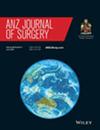Kidney Autotransplantation: A Dual Centre Experience
Abstract
Introduction
Kidney autotransplantation is a rarely performed but widely accepted technique for renal preservation in carefully selected patients with limited treatment options. Robotic kidney autotransplantation is emerging as a feasible, less invasive alternative to open kidney autotransplantation for specific patients.
Methods
A retrospective observational review was performed for all patients who underwent kidney autotransplantation within our two centres. Medical records from Westmead Public and Private Hospitals between 2014 and 2023 were reviewed to obtain demographic and clinical data, and all follow-up outcome data was collated.
Results
Eleven kidney autotransplants were performed on two men and nine women. Four of ten patients had a solitary kidney. The median age at the time of surgery was 47 years. Elective laparoscopic donor nephrectomy and autotransplantation were performed in 10 cases, and there was one emergency autotransplant after injury to the contralateral renal artery during a laparoscopic nephrectomy. Autotransplantation was performed open in seven cases and robotically in four cases. Three patients had Clavien–Dindo grade IIIb+ complications within the first week. Two (18.2%) autotransplanted kidneys required graft nephrectomy. There were no mortalities, and no patients required dialysis during follow-up.
Conclusions
Renal autotransplantation is a useful last resort reserved for complex cases where conventional methods have failed or are unsuitable. It offers renal preservation in patients who would otherwise be considered inoperable or left anephric, with lifelong dialysis or allograft transplant requirements. In carefully selected and informed patients, it presents a safe and effective technique of kidney salvage.


 求助内容:
求助内容: 应助结果提醒方式:
应助结果提醒方式:


